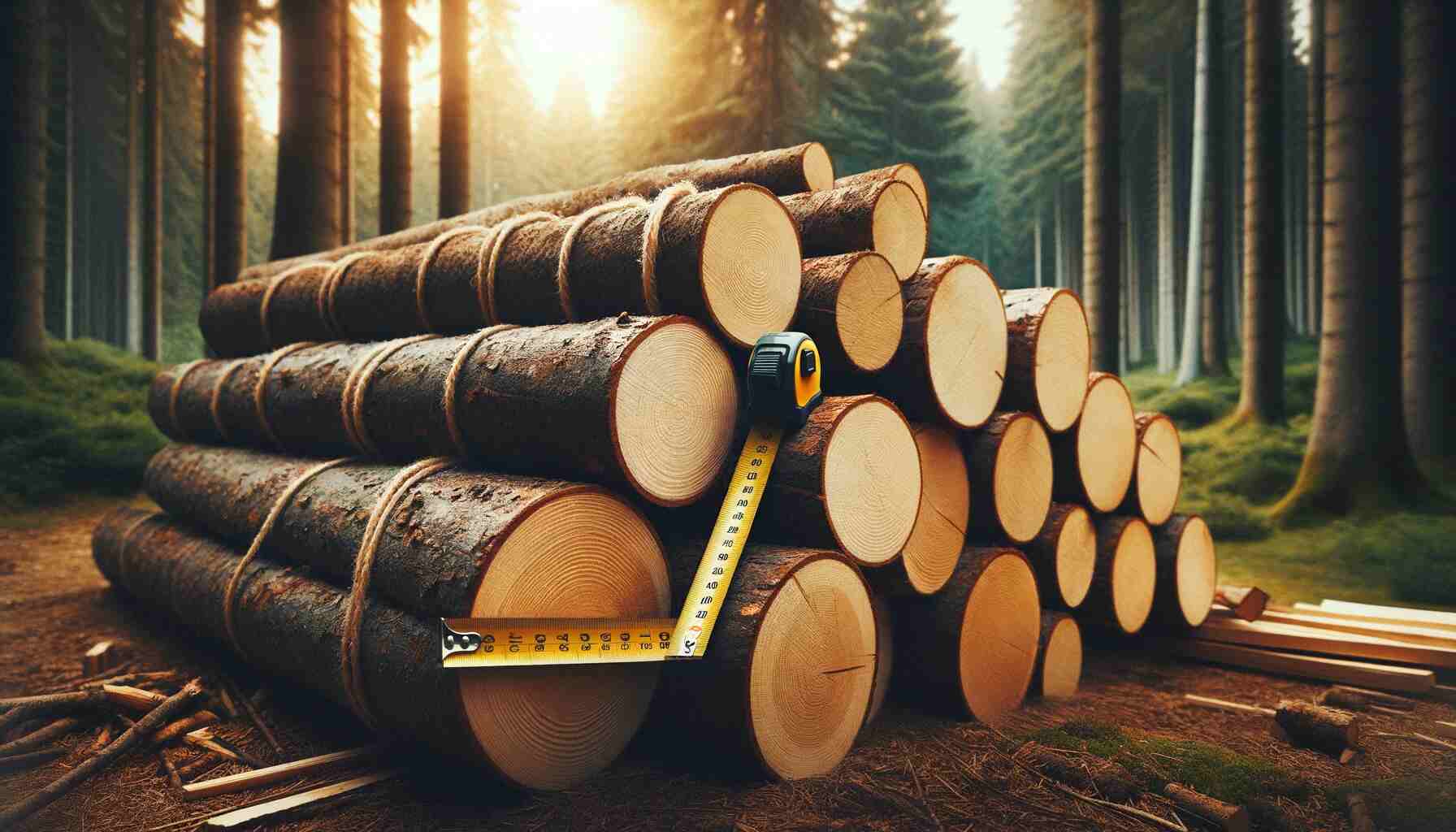If you’re a homeowner who relies on a wood-burning stove or fireplace to keep warm during the cold winter months, understanding how to measure a cord of firewood is crucial. A cord is the standard unit of measurement for firewood, and knowing how to measure it accurately can help you ensure that you’re getting the right amount of wood for your needs. In this comprehensive guide, we’ll answer all your questions about measuring firewood, including how it’s defined, how to measure it, and some useful tips for buying and storing firewood.
What is a Cord of Firewood?
Before we dive into the details of measuring a cord of firewood, let’s start by defining what a cord actually is. A cord of firewood is a unit of measurement used to quantify a specific volume of stacked firewood. Traditionally, a cord of wood is described as a neatly stacked pile measuring 4 feet high, 4 feet wide, and 8 feet long. In other words, it forms a rectangular prism with these dimensions. This traditional cord contains 128 cubic feet (3.62 cubic meters) of wood.
However, there are variations and regional differences in how firewood is sold and measured, so it’s essential to be aware of these variations when purchasing firewood to ensure you’re getting the amount you need.
Understanding Variations in Firewood Measurement
While the standard cord measurement is 4’x4’x8′ (128 cubic feet), there are variations and terms used to describe different quantities of firewood:
1. Face Cord
A face cord is typically 4 feet high and 8 feet long, but its width can vary. Instead of being a full 4 feet wide like a standard cord, it’s often only 16 inches wide, which means it contains one-third of the wood of a full cord, or 42.67 cubic feet.
2. Rick or Rick Cord
The term “rick” or “rick cord” is sometimes used interchangeably with a face cord. However, the dimensions of a rick can vary widely, so it’s essential to clarify the measurements with the seller. A rick may contain anywhere from one-third to one-half of the wood in a full cord.
3. Stove Cord
A stove cord is typically 2 feet high, 4 feet wide, and 8 feet long. It contains half the wood of a standard cord or 64 cubic feet.
4. Fractional Cords
Some sellers may use fractional cords like a half-cord or a quarter-cord, which are self-explanatory in terms of their dimensions and the amount of wood they contain.
5. Loose Wood
In some cases, firewood may be sold loosely, not neatly stacked. In such instances, it’s crucial to know the volume measurement, such as cubic feet or cubic meters, to determine how much wood you’re purchasing.
How to Measure a Cord of Firewood
Now that we’ve covered the various terms and dimensions associated with firewood, let’s discuss how to measure a cord of firewood accurately. Follow these steps:
1. Stack the Wood Neatly
To measure a cord of firewood correctly, start by stacking the wood as neatly as possible. Use a level surface, such as a pallet or a tarp, to create a stable base for stacking.
2. Build a 4x4x8 Stack
Stack the wood into a rectangular prism with the dimensions 4 feet high, 4 feet wide, and 8 feet long. This is the traditional and standard cord measurement.
3. Fill in Gaps
Ensure that there are minimal gaps between the pieces of wood in your stack. While it doesn’t need to be a perfect puzzle, reducing gaps will help you achieve an accurate measurement.
4. Measure the Volume
Calculate the volume of your stack by multiplying the height, width, and length in feet. For a standard cord, this would be 4 x 4 x 8 = 128 cubic feet.
5. Verify the Measurement
After measuring the volume, double-check to ensure it matches the standard cord measurement of 128 cubic feet. If you’re purchasing a different quantity, use the appropriate dimensions and volume calculation.
Tips for Buying and Storing Firewood
In addition to knowing how to measure a cord of firewood, here are some essential tips for buying and storing firewood:
1. Buy From Reputable Sellers
Purchase firewood from reputable and trusted sources. Ask for recommendations from friends or neighbors who have experience with reliable firewood suppliers.
2. Verify the Quantity
Always confirm the quantity you’re buying with the seller, especially if they use terms like “face cord,” “rick,” or other variations. Don’t assume that all sellers use the standard cord measurement.
3. Check for Seasoned Wood
Seasoned firewood burns more efficiently and produces less creosote buildup in your chimney. Ensure that the wood you purchase has been properly seasoned, which typically involves drying it for at least six months to a year.
4. Store Wood Properly
Store your firewood in a dry, well-ventilated area, such as a woodshed or covered woodpile. Keeping the wood off the ground and protected from rain and snow will prevent it from absorbing moisture.
5. Use a Moisture Meter
Invest in a moisture meter to check the moisture content of your firewood. Properly seasoned firewood should have a moisture content of around 20% or lower for efficient burning.
6. Rotate Your Stock
If you use firewood for heating year-round, make sure to rotate your stock so that older wood gets used first. This ensures that your wood remains properly seasoned.
7. Safety First
When handling and storing firewood, prioritize safety. Use appropriate lifting techniques to avoid back injuries, and be cautious of insects or pests that may be in or on the wood.
Conclusion
Measuring a cord of firewood correctly is essential to ensure you get the right amount of wood for your heating needs. While the traditional cord is 4 feet high, 4 feet wide, and 8 feet long (128 cubic feet), variations in measurement terms exist, such as face cords and stove cords. When buying firewood, always clarify the quantity and dimensions with the seller to avoid surprises.
Properly seasoned firewood, stored in a dry location and with a moisture content of around 20% or lower, will burn efficiently and help maintain a safe and warm home during the winter months. By following these guidelines, you’ll be well-equipped to measure, purchase, and store firewood effectively, ensuring that you have a reliable source of warmth throughout the cold season.





